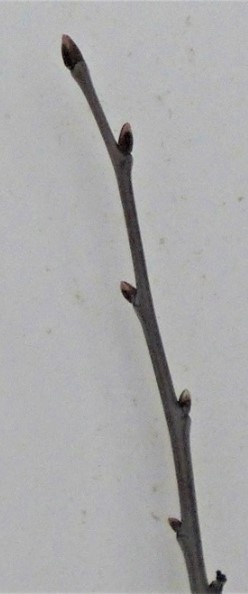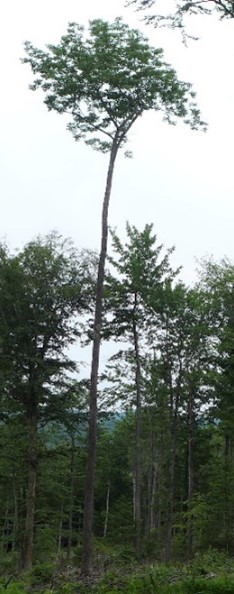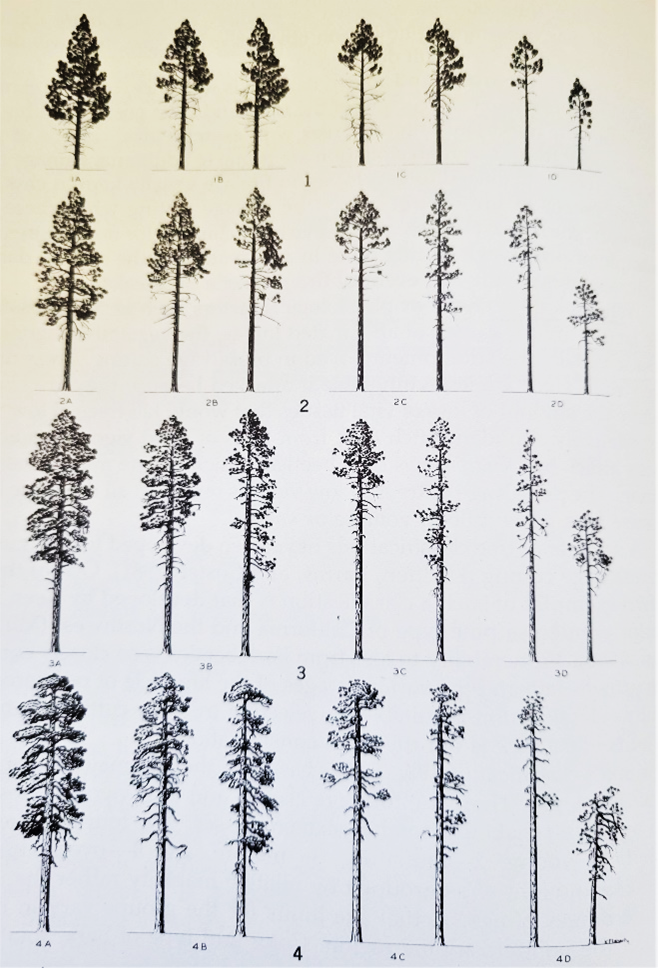Forest Stewardship: The basics of a tree.
By Charlie Thompson
This is the first of a series of columns about forest land and its care. Biology and ecology underpin all good forestry, so let’s start there and talk first about trees – what they are and a little about how they work. We are reminded all the time that a “forest is more than just the trees” – fair enough, but trees are the most obvious citizens of a forest, and without them, we don’t have a forest.
What is a tree? How does it grow? Why belabor this, since we all know what a tree is? Because knowing how a tree grows will help you become more observant when you’re in the woods. And if you happen to own a woodlot, being more observant will both increase your enjoyment of the woods and can help you better understand the basis for some of the decisions foresters recommend.
Here’s one definition of a tree – “a woodyperennial plant, typically large and with a well-defined stem, carrying a more or less definite crown”. “Woody” – as a substance, wood provides support for the plant and is essential for conducting water, minerals and nutrients, allowing the plant to grow to a “large”size and to be “perennial”, living anywhere from decades to millennia. Each year the plant can grow up and out. The size and shape of the “crown” is determined by a combination of genetic and environmental factors (including competition for space and light). The crown consists of branches, twigs, and foliage, all originating from the buds of the previous year (Figure 1).

One way to think about a tree is as a root and a shoot. The root anchors the plant and gathers and circulates water and minerals. The shoot photosynthesizes and circulates metabolic sugars. (This is very oversimplified.) Once beyond the very early seedling stage, only a tiny percentage of the plant’s total mass consists of living cells: the photosynthesizing apparatus, the growing tips of the root and shoot, and a minor, but vital, part of the highway system that moves water, minerals, and metabolites around the plant. It is a remarkable balancing act where things have to be in the right proportion. One of the things foresters look at when evaluating tree condition is the “live crown ratio” – the percentage of the total tree height supporting a significant crown. The tree pictured (Figure 2) has a small crown – the foliage can produce enough food for the tree to survive, but less than the ideal amount for robust growth on what is a very long stem and a root system large enough to support the tree. Maintaining the “right” live crown percentage, which varies by species and age, is part of a forester’s task.

To survive, a tree must tolerate a variety of disruptions and insults to its ideal growing state and root/shoot balance: insect predation, various diseases, too little or too much water, compaction, injury from other trees falling on it, ice, heavy wind, fire, and the list goes on. Recently, risks from a changing climate have gotten a lot of attention. Changes in average temperature may alter the range of some species, especially where they are already near the edge of their range. Greater variation in amount and timing of precipitation may alter competitive dynamics. And stresses from temperature and moisture variation may increase susceptibility to various insects and diseases, both native and exotic.
The process of choosing which trees to favor in a forest stand can be complex, but the decision always involves carefully comparing the condition of different trees. Sometimes, a tree in less than optimal growing conditions may benefit from more room to grow and reduced competition – but not always. Various classifications have been developed to systematize the process, but it’s especially hard in complex native mixed hardwood stands like those found in the North Quabbin. Figure 3 shows one example of a system based on age and vigor class for a western conifer – Ponderosa Pine. Although not a Massachusetts species, it illustrates the concept of condition class well.
It’s important (and fun) to observe closely, so here’s a “homework” assignment to help you hone your skills when you’re next in the woods. Part 1 – choose several individuals of a common species and observe the amount of variation in the extent, length and shape of the crown. Part 2 – choose two species and observe the differences in crown characteristics between the species.
Charlie Thompson is a retired forester, member of original board of Mount Grace, current board member of MA Forest Alliance, co-author of Working with your Woodland and More than a Woodlot. He is a woodlot owner in MA and VT.

